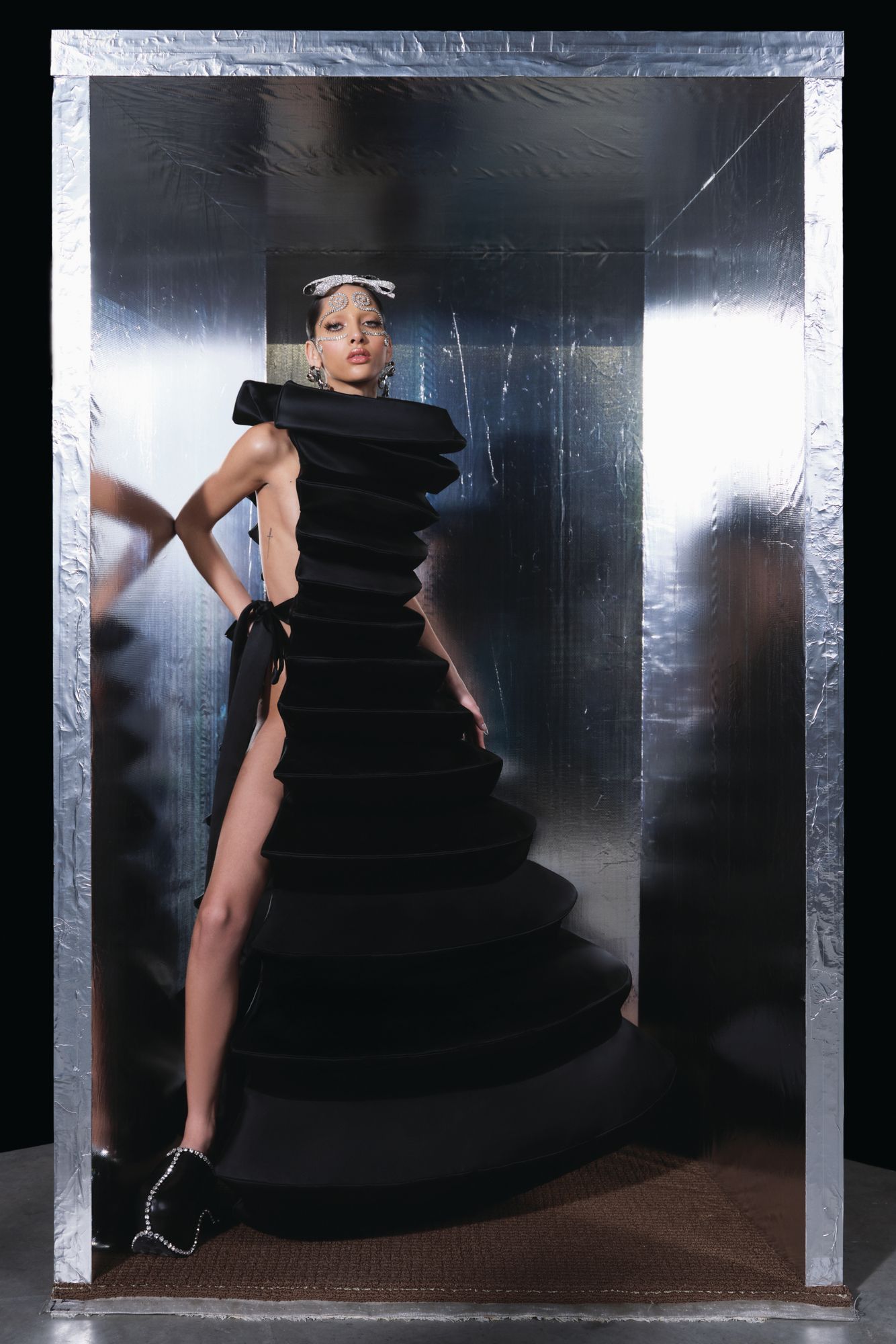From Area NYC to SR Studio LA and Yuima Nakazato, a new class of couturiers are breathing life into the craft
Challenging the status quo, a new class of couturiers is breathing life into the historic craft with a common mission to diversify and democratise.
See also: Kim Jones' Fendi Haute Couture Collection In Shanghai Pays Homage To Literature And Creativity
Area NYC
Last year, fashion label Area sent a model down the runway wearing a miniature folding chair, bedazzled in crystals and strapped to her body like a purse, and the internet went mad. “It was so polarising,” says Piotrek Panszczyk, co-founder and creative director of the New York City-based indie brand that has quickly become fashion’s latest cause célèbre. Some people were outraged, “but they were also mildly entertained and felt the need to comment”, he says. The chair purse made its intended mark, though, and recently resurfaced on Instagram as part of the infamous Bernie Sanders Chair Meme.
In January, the young founders of Area—Panszczyk, who is Polish, and Beckett Fogg, his American partner—created a similarly divisive moment, this time with the introduction of their first couture collection. Or at least, it was sort of their first couture collection, as the duo’s presentation was not listed on the official calendar of shows, nor were they even in Paris, where they normally take place. Not long ago, such a move would have been dismissed as an example of an upstart’s impertinence, but fashion is currently deep in the throes of a state of disruption that has broken down barriers of entry across all of its channels of design and distribution—now including, it would seem, couture.
Many editors, in fact, welcomed Area’s fresh, audacious take on the esteemed craft, while others, not surprisingly, dismissed it as anything but. While controversy wasn’t their intention, the designers relished the conversation that they sparked. “It was important for us to expand on the idea of what couture could mean,” says Fogg, who manages the business side of Area but continues to contribute to the designs. “We wanted to show that it doesn’t have to be done in a specific place by a specific person for a specific person.”
The duo founded Area on this very idea of vagueness. They deliberately avoided using their names in the branding and wanted to reference an ambiguous geolocation, but most symbolically, they liked the ambivalent responses people have to their signature embellishment—crystal. “We naturally gravitated towards it because it can be seen as high or low, a fake diamond or super-luxurious, depending on how people interpret it,” says Fogg. “We also love the timelessness of it, and how it’s modular, like a piece of Lego that you can build on,” adds Panszczyk, who is coincidentally toying with a string of crystal beads as he speaks from Area NYC’s Canal Street studio in Manhattan.













